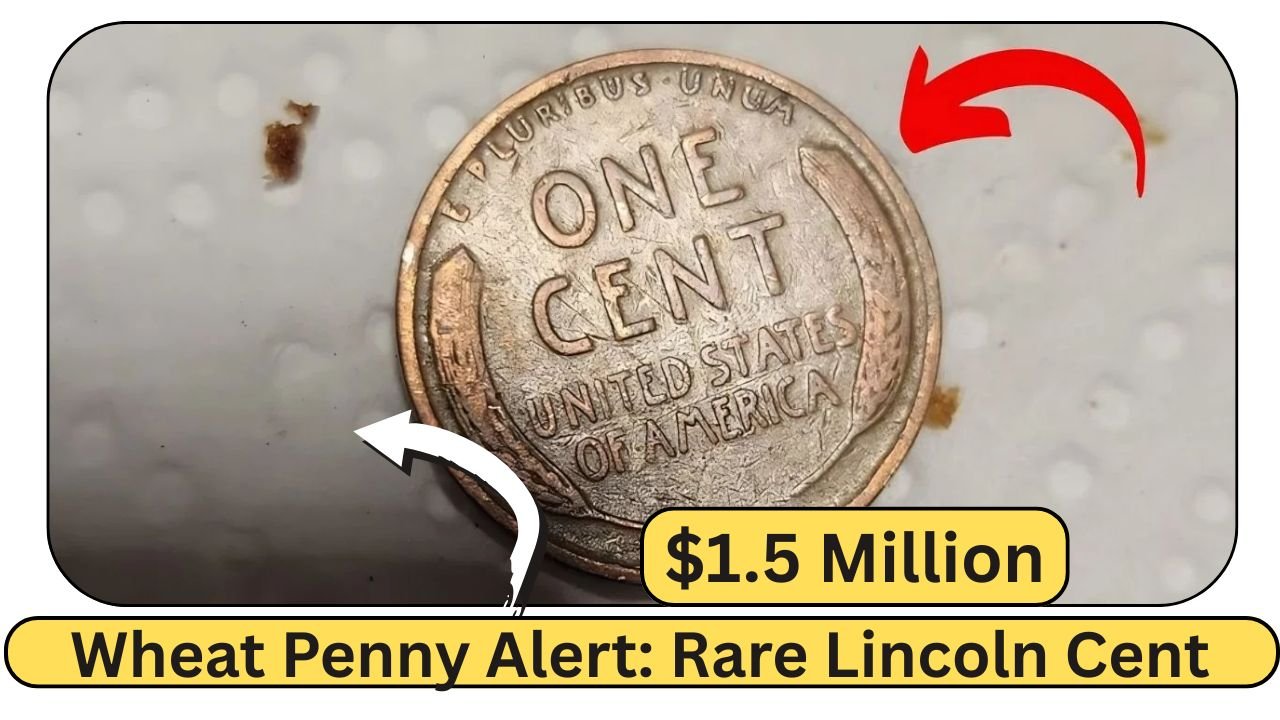Wheat Penny: What if a penny in your change was worth $1.5 million? The Lincoln Wheat Penny, minted from 1909 to 1958, is sparking a frenzy in 2025 as collectors hunt for rare versions still floating around. Featuring Abraham Lincoln on the front and wheat stalks on the back, these coins are common, but a few with errors or special dates are pure gold. A 1943 copper penny sold for $1.7 million in 2010, and X posts are buzzing about a kid finding one worth $10,000 in a coin jar this year! Let’s dive into the most valuable Wheat Pennies and how to spot a treasure in your change.
A Coin Full of American History
The Lincoln Wheat Penny, designed by Victor David Brenner, hit pockets in 1909 to celebrate Lincoln’s 100th birthday. It was the first U.S. coin to show a real person, with wheat stalks on the back symbolizing prosperity. Minted in Philadelphia (no mint mark), Denver (D), and San Francisco (S), billions were made. In 1943, pennies were zinc-coated steel to save copper for World War II, but a few copper errors were minted by mistake. These rare 1943 copper pennies, along with other errors, make Wheat Pennies a collector’s dream, with one fetching $840,000 in 2021.
Why Some Pennies Are Worth Millions
The $1.5 million price tag likely points to the 1943 copper penny, one of only 20–40 known to exist, with a top sale of $1.7 million. Other valuable Wheat Pennies include the 1909-S VDB (484,000 minted, worth $500–$100,000), the 1955 Doubled Die (blurry text, $1,000–$33,000), and the 1922 No D (missing mint mark, $500–$20,000). Condition is key—shiny, unworn coins (MS65 or higher) fetch the most. X users warn that $102 million penny claims are fake, but real sales like $840,000 prove these coins are treasures.
Top Valuable Wheat Pennies to Find
Here’s what to check for in your change:
- 1943 Copper Penny: Copper instead of steel, worth $10,000–$1.7 million.
- 1909-S VDB: Has “VDB” initials, worth $500–$100,000.
- 1955 Doubled Die: Blurry date or “LIBERTY,” worth $1,000–$33,000.
- 1922 No D: No “D” mint mark, worth $500–$20,000.
| Feature | Common Wheat Penny | Rare 1943 Copper Penny |
|---|---|---|
| Year | 1909–1958 | 1943 |
| Material | Copper or steel (1943) | Copper (error) |
| Mint Mark | None, D, or S | None or D (rare) |
| Value | $0.01–$1 | $10,000–$1.7M+ |
Where to Find These Hidden Gems
Wheat Pennies are still out there—in change from stores, vending machines, or old piggy banks. A 1943 copper penny worth $200,000 was found in a school lunch payment in 2019! Check family coin jars, flea markets, or bank rolls, where older pennies often mix in. X users share stories of finding 1955 Doubled Die pennies worth $1,500 in gas station change. With millions still in circulation, a rare penny could be hiding in your pocket or a relative’s collection, making every cent worth a quick look.
What to Do If You Find a Rare Penny
If you spot a penny with an odd date or look, don’t clean it—cleaning can ruin its value. Store it in a plastic coin sleeve to keep it safe. For 1943 pennies, use a magnet—copper doesn’t stick, steel does. Check for doubled text or missing mint marks with a magnifying glass and weigh it (copper is 3.11 grams, steel 2.7 grams). Compare it to images on trusted sites like PCGS or NGC. Take it to a coin shop or grading service for authentication. Auction houses like Heritage Auctions can help you sell for top dollar, but avoid scams about “million-dollar” pennies.
Start Your Penny Hunt Now
The $1.5 million Wheat Penny, like the 1943 copper, shows that tiny coins can hold huge value. While $102 million claims are myths, real sales like $840,000 for a 1943 bronze penny prove treasures exist. With Wheat Pennies still in circulation, your change could hide a gem. Grab a magnifying glass, check for 1943, 1909-S VDB, or 1955 pennies with errors, and look for shiny coins. Coin collecting is a fun way to connect with history, and as America nears its 250th anniversary in 2026, interest is growing. Check your change today—you might find a penny worth a fortune!

